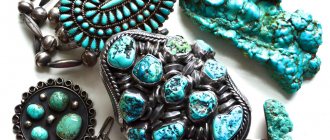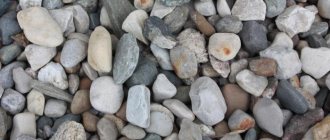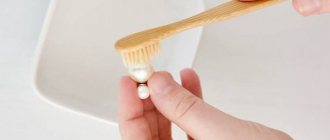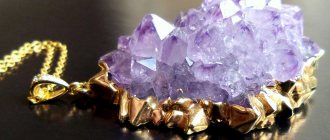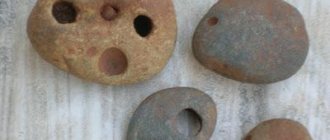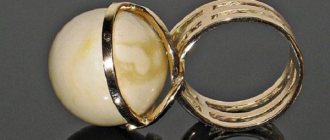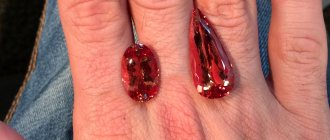General marble care
To extend the durability of marble products, you should periodically and thoroughly wipe them with a soft velvet cloth soaked in warm water and a neutral detergent, or use a special cleaning agent for caring for natural stone. You should be aware that too much detergent can leave streaks on the marble. In case of heavy contamination, it is necessary to wipe the surface to be cleaned with a weak solution, preferably several times. The final stage is to wipe the wet surface with a dry soft cloth or hydroscopic velvet cloth.
Do not use detergents containing acids (citric, acetic, etc.) to clean marble. The use of creams, pastes and powders containing abrasive substances is unacceptable. They are widely used in everyday life for cleaning earthenware, ceramics, and metal surfaces and have a good cleaning effect, but they are contraindicated for marble, because. scratch its polished surface. To prevent contamination of marble products after cleaning, the surface should be treated and polished using a special protective coating. If you apply a wax coating, you should know that it serves to seal the stains that have arisen and makes cleaning difficult, and such a coating is applied only after the marble has been thoroughly cleaned.
How to care for chrysoprase stone?
The main condition for caring for chrysoprase is to store it away from sunlight, since constant exposure to ultraviolet radiation can discolor the stone, making it faded and inconspicuous. Fortunately, this is easy to fix. It is enough just to wrap the mineral in a damp cloth for a while and let it soak in moisture.
Interesting materials:
How to dilute citric acid for blueberries? How to dilute citric acid to remove scale? How to dilute ammonia for cleaning floors? How to dilute ammonia for spraying plants? How to dilute dry yeast for watering strawberries? How to dilute vinegar to rinse things? How to dilute milk replacer for piglets? How to dilute milk replacer for calves? How to breed Aktara for spraying indoor plants? How to breed Baytril for chickens?
Caring for granite products
Caring for granite involves removing sand and dirt from it, especially from smooth horizontal surfaces that you walk on. Any small debris can act as sandpaper, scratching your stone. Vacuum or dry mop floors, walls and steps. Wipe off dust from countertops with a clean, dry cloth. Wipe up spills immediately to avoid stains.
Caring for Granite Countertops
Granite countertops are the most practical and durable choice for the kitchen. Granite countertops are not afraid of acid and are less susceptible to physical damage and are difficult to scratch. In order for your countertop to remain in its original form, you need to remember the following: try to remove spilled liquids from the surface by blotting the same way as on any natural stone, and not by wiping it - and do this as soon as possible. Don't leave liquids on the countertop until the morning.
Most often, oil and acid (wine) stains remain on granite, so it is very important to remove them as soon as possible, after removal by treating the stone with a special PH-neutral cleaning agent. Impregnation of granite helps to reduce the density of the surface layer and reduce (up to 10 times) the absorbability of the surface. Therefore, as a protective measure, it is recommended to impregnate granite (soak it with a special composition).
When cleaning granite countertops in your kitchen and bathroom, first try simply wiping them with a soft velvet cloth or sponge soaked in warm water. Soak any food remaining on the surface first. This allows you to get rid of crumbs, dried sauces, traces of soup, tea, soap, etc. If not, add some acid-free dishwashing liquid to the water. Then rinse the surface thoroughly with clean water. Excess detergent can leave a film or whitish streaks on the granite. Do not use stronger cleaning products such as bath and tile cleaners or abrasive powders. They can leave stains and scratches on the stone.
Removing stains from granite surfaces.
The absorbed stain can be easily removed. Removing stubborn stains is a process that requires a lot of patience. In most cases, what you see is a solid sediment entrenched between the crystals, left after the evaporation of the liquid. The main task is to transfer it back into solution and wash it off. First of all, you need to determine whether the dirt dissolves in water or oil, i.e. stain left by tomato juice or salad dressing.
If the dirt can be dissolved in water, pour hot water (from the tap, not boiling water) over the stain and soak for several minutes. Then wipe off excess water. Cover the stain with a 5mm layer of paper towels and soak it in hot water. Place plastic wrap on top and a flat weight on top of it, like a cast iron frying pan or an encyclopedic dictionary. Leave all this for about 10 hours - preferably overnight, so as not to disturb anyone. Then simply throw away the towels along with the dirt that has soaked them. Let the affected area dry and take a closer look at it. If there is still something left from the stain, repeat the described procedure.
If the dirt is fat-soluble, do everything exactly the same, but use cold acetone instead of hot water. After 10 hours, throw away the paper towels and wash the problem area with clean water. If necessary, repeat the processing.
Let's preserve the brightness of colored stones
Everyone knows that to add shine, you need to periodically clean silver or soak it in a special solution. Stones also require careful handling. As a reward, they retain their natural radiance and brightness of shade.
Despite the fastidiousness of rocks to the effects of certain liquids and substances, they can be cleaned, like silver and gold, with special solutions. For example, sapphires, diamonds and rubies are cleaned with a solution of salt, soda, water and bleach. The stones are kept in the resulting liquid for several minutes, then wiped and rinsed with running water. Alexandrite stones retain their color if you clean them in a soap solution with the addition of ammonia. This cleaning method will not harm even silver and gold items. On the contrary, gold and silver will sparkle even more. A noble ruby accepts both cleaning methods. After cleansing, the crystal reveals its beauty and natural charm with renewed vigor. Jewelry with opal, amethyst and topaz stones should not be worn for a long time in sunny weather so that they do not lose their color. If this happens, there is no point in cleaning the gems; more drastic measures will need to be taken. In addition, temperature changes are harmful to opal. Due to the fact that it consists mostly of water, it evaporates in hot weather and crystallizes in cold weather. In both cases the stone cracks. Gemstones are definitely worth caring for. It never hurts to carefully clean them and observe the storage and operating conditions. The gem will respond for this with long-term and honest service.
Caring for marble fireplaces
According to their purpose, fireplaces are subject to cyclic temperature changes associated with heating and cooling. Over time, this can disrupt the structure of the marble and its external aesthetic appearance, which as a result acquires a spongy structure. This result is due to the weakening of the natural bonds between the marble crystals and is not always obvious, since outwardly the surface looks absolutely homogeneous. These defects primarily appear on the lintel and on the inside of the side walls of the fireplace. If this happens, the marble becomes even more vulnerable to dirt and liquids.
However, with proper care, cleaning and treating the surface of the fireplace with protective agents, inevitable defects may appear only after decades. You should also remember that as a result of invisible corrosion of fireplace tongs and grates in contact with the fireplace lining, rust spots may appear on it. To prevent this from happening, metal parts must be treated with an anti-corrosion compound and/or isolated from the surface of the fireplace.
Caring for marble countertops
Marble countertops in the kitchen must be protected from exposure to hot objects. You should use coasters for hot dishes, as well as dishes and metal utensils that can scratch the surface.
Protect the marble surface of the countertop from exposure to prepared foods and especially juices, which contain a lot of acid - this causes the marble to become dull. This is why acid-containing products should not be used to remove stains and soap scum from marble products in the kitchen and bathroom. You can use a light solution of ammonia in water or special preparations.
Stains on natural stone
Five main classifications of stains:
- Organic stains (coffee, tea, sauces, mustard, etc.)
- Inorganic stains (ink, paint, etc..)
- Oil stains
- Biological stains (mold, moss, etc.)
- Metal stains (rust, copper, etc.)
- "Water spots" or "Rings"
Marble, travertine, onyx, limestone - all these stones are calcite-based, and therefore are unstable to PH active liquids, especially acids. When an acid (fruit juice, wine) or a highly alkaline detergent comes into contact with polished marble, it will corrode the marble at the point of contact. After this, traces of corrosion remain on the surface, which look like water stains or rings. Attempting to remove such “stains” with special products will be a waste of time, since these are not stains, but traces of corrosion, and they can only be removed by re-polishing the stone.
Methods for cleaning stones and crystals
Firstly, to cleanse, you can place the stone on a druse (a collection of crystals grown on a common base) of quartz or amethyst for a long time.
Secondly, the crystal or stone is placed in a jar of salt or simply in salt water and left for at least 3 hours. It is believed that salt absorbs negative energy. After cleansing in salt water, the crystal should be dried in the sun.
Thirdly, the crystal or stone is washed with plain water and then dried in the sun, but not under an electric lamp.
Fourthly, you can clean the stone using fire. To do this, you just need to hold it over the candle.
Fifthly, you can clean the stone with the help of earth, burying it on the waning moon and leaving it for a week.
Cleaning Marble Floors
It is recommended to wash the stone floor with a separate mop, no more than 1-2 times a week (the floor should be thoroughly swept or vacuumed before wet cleaning). It is strictly not recommended to use washing powders, detergents not intended for stone, or ordinary soap as detergents: a whitish coating on the stone surface after such treatment is almost guaranteed.
To care for stone, there are special liquids with a neutral pH. For regular cleaning, simply wash the floor with clean water and a mild detergent. In case of significant contamination, it is necessary to use these drugs in stronger concentrations. There are times when the stone is very dirty (for example, after completion of repair work). Neutral detergents will not help here, so you will have to use alkaline cleaners that have a strong degreasing effect. Acid cleaners are used for granite.
Caring for marble floors.
When choosing a marble flooring installation, special attention should be paid to the texture of the stone. The type of surface can be polished or unpolished, and the regularity of maintenance of the coating largely depends on it. On unpolished (polished or aged) surfaces, wear is less noticeable than on polished surfaces. Therefore, maintaining aged floors is more economical, but on polished floors there is less chance that the stain will be absorbed instantly. Polishing is a minor top protective layer that keeps external chemical influences to a minimum level.
If polished material is used to finish the floor in areas with fairly heavy traffic and work is not regularly carried out to protect it, then you need to be prepared for the fact that the procedure of professional repolishing (restoration) or, as experts call it, crystallization, will become a normal part of regular maintenance , the procedure is expensive, so we advise you to care for marble as much as possible and follow the instructions of specialists and consult with knowledgeable people. At any time, you can contact Jazz Stone specialists and they will answer any questions related to the processing of natural stone.
Daily care of marble floors
Dry cleaning is recommended for daily care of natural stone floors, in particular marble. The floor must be swept thoroughly to remove sand and other abrasive particles. For a polished surface, the brush should be dry and soft; if not polished, the brush should be harder. A good way to clean is also to use a vacuum cleaner with a brush attachment.
Ritual of cleansing stones and crystals with the elements
To carry out the stone cleaning ritual, you will need a small table covered with a cloth, incense, a red candle, water and a flower pot with soil. Incense is placed on the eastern side of the table, a lighted candle on the southern side, water on the western side, a pot on the northern side, and a stone is placed in the center.
Next, you need to take the stone in your hand, concentrate on the pot of earth, place the stone in it and say: “I cleanse you with the Earth.” Then concentrate on the water and put a stone there, saying: “I cleanse you with Water.” Next, the stone should be carried over a burning candle and said: “I cleanse you with Fire.” At the last stage, you need to hold the stone over the smoke from the incense and say: “I cleanse you with Air.”
Natural stone products: care features
Modern style dictates the use of a large number of natural materials. Stone is now used in literally all areas: from construction and decoration to interior design and the manufacture of various objects from natural stone: countertops, mantels, window sills, small objects (vases, ashtrays, figurines, candlesticks, souvenirs).
The combination of visual appeal, strength, and wear resistance makes objects made of natural stone very popular. A beautiful stone candlestick or a unique marble tabletop will only last if the product is used correctly. Such items require special care, which extends the life of the interior item.
Polishing
The basis for caring for a natural stone product is treating the glossy surface with a liquid based on synthetic polymers. The wax in the polishing liquid creates a kind of protective armor on the surface of the product. In addition, regular polishing with such products significantly increases the safety of stone floors, for example, since after treatment the smooth stone surface becomes less slippery.
Stone floor
Fans of luxurious interiors with a distinct personality in design often choose stone floors. A marble floor characterizes the owners of the premises as people inclined to make practical decisions, supporters of refined and at the same time durable options. Marble for flooring is aristocratic; This coating looks expensive and perfectly resists mechanical damage.
To increase wear resistance and enjoy the ideal appearance of the stone for years, you need to follow the rules of use and care of the natural material. They are simple:
- Caring for stone floors includes measures that will prevent the formation of defects. To prevent cracks, chips, and scratches from spoiling the stone, before each wet cleaning it is necessary to clean the surface of the stone from debris and sand. Otherwise, the stone will fade, become scuffed, and become unattractive.
- Stone floors are washed with a special soft mop without a tip. You can add a stone surface care product to the water. Such liquids have a neutral pH and form a protective film on the stone.
Stone tiles
To clean marble and granite tiles, do not use knives or sharp objects. Daily care is carried out with “Stone Soap”, which will remove household dirt, remove oil or grease stains, and refresh the color of the tiles.
For porous types of tiles, it is worth using a special type of care product - for example, with acrylic components. Acrylic will seal the pores, and thereby increase the resistance of porous stone tiles to moisture and dampness.
It is best to combat rust stains, limestone deposits, and traces of cement using special means. They successfully dissolve unwanted deposits and do not damage the structure of the stone.
Stone countertop
Granite and marble countertops are beautiful and practical. Application of “Protection from Dirt” will extend the service life and enhance the beauty of the stone surface. This liquid forms an invisible layer that can repel liquids: juice, water, coffee. Such a liquid will clean a stone with traces of ingrained dirt, and using a creamy paste will allow you to clean grease and oil drips from the countertop.
Stone window sill
For a beautiful shine and cleanliness of marble and granite window sills, it is necessary to use “Protection from Dirt”. An invisible protective film on the surface of an elegant stone window sill will protect against the appearance of drips and protect against the formation of stains due to soil spilled from a pot with a plant.
Landscape design products, decorative statues
For garden and park sculptures, a necessary procedure is treatment with special impregnations. Decorative items and landscape design elements after treatment acquire high moisture resistance, become dirty more slowly, and retain their integrity longer.
Caring for natural stone floors
Natural stone is deservedly included in the list of the most durable flooring materials, however, it also needs to be treated with care.
The main protection of a stone floor from contamination is polishing its surface. The higher the degree of gloss, the lower the adhesion of the material to pollutants. It follows from this that the main “enemy” of a stone floor (as well as other floor coverings) is abrasive. It is abrasive-containing media that covers the mirror surface of a stone floor with a network of small scratches, the number of which only increases over time.
As a result, the surface of the stone becomes rough and prone to forming strong bonds with household pollutants. Places that have been subject to intense abrasion for a long time lose their original smoothness and begin to resemble a road with potholes. Marble and other limestones, which do not have a high level of hardness, are particularly sensitive to the action of abrasives.
A serious danger is posed by household pollutants that are capable of combined effects on stone. Tomato juice or dry red wine, for example, contain organic acids, as well as active dyes of natural origin. The same can be said about an intensely colored sauce, in the production of which lemon juice or vinegar was used (they are well-known acidic media).
Acids of organic origin can change the polished stone (its surface structure), thus opening the “gate” for the penetration of dye molecules (particles) into the material. If an uncolored acid-containing liquid (for example, vinegar) gets on a stone, in any case, surface recrystallization of the material will occur, which will lead to intense contamination of the damaged area in the future. It is marble that has a special “fear” of acids, even in small concentrations.
Recommendations for operation and maintenance
It is imperative that the hall, as well as the entrance area, be equipped with mats that trap dirt in order to protect the stone floor from the negative effects of abrasives. If there is heavy furniture in the room, you will need to install soft pads on its legs. All this equally applies to decorative sculpture, flower pots, and vases located on the floor.
Daily cleaning should include removing dust using a vacuum cleaner equipped with a plastic nozzle (its nozzle must be clean). Don't get carried away with wet cleaning. Water, as a rule, contains calcium compounds, which, after the liquid dries, cause whitish cloudy stains to appear on the surface of the stone (it is very difficult to get rid of them).
Daily cleaning must be combined with surface treatment of the materials in question using polish cleaners. These substances not only remove minor contaminants, but also create a protective thin film. In the process of preventive care of the floor surface, it is allowed to use both special polishes and compositions that are intended for processing wood. Polish is applied to a small area using a mop. If it is necessary to treat the floor at a large public facility, then polishing of the protective composition is carried out with a special machine (in this case, as a rule, they resort to the help of cleaning companies).
The frequency of application is determined by the traffic flow of the room. For areas with intense traffic, it is often necessary to provide even daily treatment with polish. In other cases, the intervals between treatments are chosen arbitrarily. But a constant signal that the protective coating needs to be updated are noticeable stains of dirt on the surface of the stone floor. Before applying a new layer, it is necessary to remove the old protective film (use ordinary household detergents that do not contain acids). It is worth pointing out that the film reduces the level of adhesion of shoes to polished stone. This is especially true for granite, which is already highly slippery. If the floor is tiled with granite tiles, then you should not use polish on the steps of stairs, as well as in places where there is a risk of injury.
What to do if an acid-containing liquid gets on the stone floor? Organic acids, depending on their concentration, can have a negative effect on a stone floor in a period from 2-3 hours to 1 day (wine spilled in the evening will certainly leave a “reminder” of itself by morning). Therefore, any acid that gets on the stone must be immediately collected with a napkin, and the chemically exposed area must be treated with a weak alkali composition (for example, a solution of baking soda).


